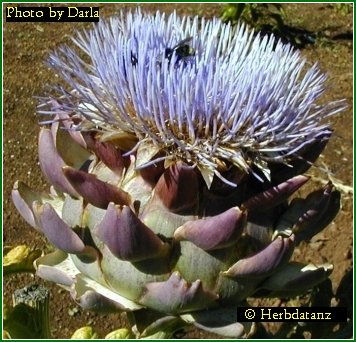

Artichoke
U.S.D. 1926 Pt II. & Martindale's 24th Br.
Compiled and edited by
Ivor Hughes.
Artichoke.
U.S.D. 1926.
Cynara. Cynara Scolymus L.
Artichoke. This is a composite plant, indigenous to the south of Europe, and
cultivated as a culinary vegetable. The receptacle and the lower portion
of the fleshy leaflets of the flower-heads are eaten. When young, the
heads are cut up raw and eaten as salad; when, older, they are boiled, and
variously dressed. The flowers are said to curdle milk, and the plant to
yield a good yellow dye. The leaves and their expressed juice are very
bitter, and have been thought to be actively diuretic. Cynara Cardanculus,
the cardoon of the garden, very much resembles the artichoke. The stalks
of the leaves are used as a vegetable in France. Artichoke leaves have
been used in dropsies and rheumatic affections. The Jerusalem artichoke,
Helianthus tuberosus L., is another distinct plant belonging to the Compositae,
which has been cultivated for its edible tubers. These contain an
abundance of inulin and sugar.
Artichoke Leaf
Martindale's 24th Br.
Cynara. Artichoke
Leaf. The leaves of the globe artichoke, Cynara scolymus (Composite) are said to
have diuretic and choleretic properties. Extracts of the leaves have been
used in certain proprietary preparations. Cholphytone (Bengue) is an
extract of artichoke leaf, available as Dragees and as Oral Drops;
Dose: 6 to 12 dragees daily or 10 to 40 drops once to thrice daily,
with meals.
Note. The Jerusalem artichoke is Helianthus tuberosus (Compositae).
Martindale's 28th report as above and state that Cynara is official in the Brazilian and Rumanian Pharmacopoeias.
![]()